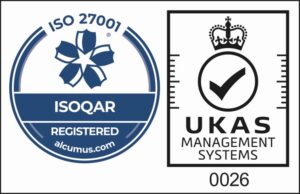Growth doesn’t just attract customers—it attracts attention. And not all of it is welcome.
As organizations expand their digital infrastructure to support new tools, teams, and markets, they also widen the window for cyber threats to get in. The number of exposed endpoints multiplies. Cloud environments become harder to monitor. Access controls lag behind hiring sprees. Meanwhile, attackers are getting faster, more targeted, and more professional.
Security budgets might increase—but rarely at the pace needed to match this complexity. That mismatch has pushed risk management in IT security into the spotlight. What was once considered a technical back-office task is now a strategic business concern. It’s about resilience. It’s about protecting the systems that power growth, and the trust that keeps customers loyal.
The challenge? Many growing businesses now face a dangerous paradox: they’re valuable enough to be targeted, but often lack the in-house expertise, frameworks, or bandwidth to mount an effective defense.
A Shifting Landscape of Risk
Cyber risk in 2025 is not what it was even five years ago. Ransomware groups operate like SaaS providers. Phishing campaigns are AI-generated. And cloud misconfigurations—often the result of fast-paced digital adoption—now account for a significant share of breaches.
Understanding this landscape requires more than just vigilance; it requires structured risk assessment. This means identifying which systems, data, and processes are most critical, and mapping out where vulnerabilities actually lie—not just where they’re assumed to be. It’s a discipline that brings clarity, not just compliance.
According to the National Institute of Standards and Technology (NIST), risk assessment isn’t about finding every weakness—it’s about understanding which weaknesses matter most. This mindset is crucial for organizations juggling operational growth with finite security resources.
Beyond Tools: The Case for Strategic Mitigation
But knowing your risks is only part of the picture. The next challenge is mitigation—often confused with “fixing everything.” In reality, effective risk mitigation is about prioritization. Which threats can you neutralize? Which should you monitor? And which carry such a low likelihood or impact that accepting the risk is a reasonable business decision?
This kind of strategic thinking—common in enterprise risk management—is becoming essential in IT security. It moves the conversation from a reactive one (“How do we stop an attack?”) to a proactive one: “What is our tolerance for this risk, and what’s the smartest way to manage it?”
A recent IBM Security report found that companies with mature risk mitigation strategies—those who tested their incident response plans and aligned IT with business leadership—saved an average of $1.49 million per breach compared to those without.
Building a Culture of Risk Awareness
Ultimately, what separates resilient organizations from vulnerable ones isn’t just technology. It’s culture.
Risk management strategies work best when they’re woven into the fabric of decision-making—from vendor selection to software deployment to how teams collaborate across departments. That means involving leadership, educating staff, and aligning cybersecurity goals with broader business outcomes.
It also means revisiting assumptions regularly. Just as the threat landscape evolves, so must your risk posture. Regular assessments, updated playbooks, and cross-functional communication aren’t just best practices—they’re competitive advantages.
The Strategic Imperative
Risk in IT security isn’t going away. If anything, it’s becoming more complex, more nuanced, and more consequential. But with clarity, commitment, and the right strategies, it can be managed—not just avoided.
For growing businesses navigating an increasingly digital world, now is the time to think differently about risk. Not just as a cost to contain, but as a strategic lever—one that, if handled well, can unlock smarter decisions, stronger systems, and sustainable growth.









